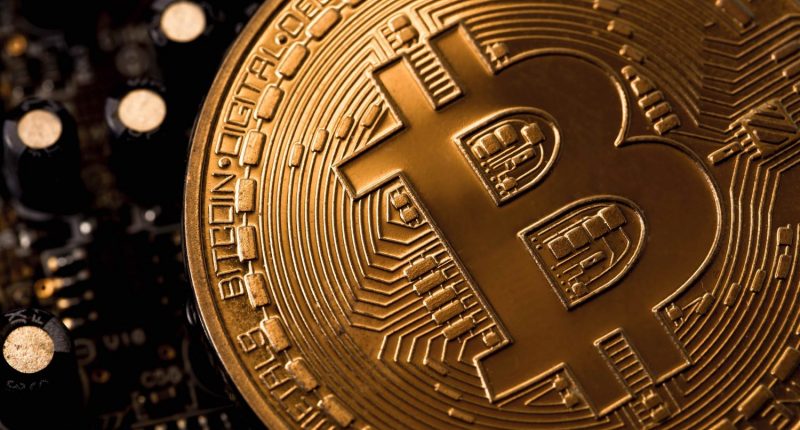Bitcoin, the first known cryptocurrency, is decentralized in nature, and it also dissolves the need to rely on traditional intermediaries or institutions like banks, to finalize your financial transactions. Bitcoin hit an all-time high in December 2020, hitting as high as $23,000. With the rising numbers, public attention is also drawn towards it.
And before you know it, everyone wants to invest in Bitcoin, which happened in the last quarter of 2020 with more and more investors trying their hands on Bitcoin. Fast forward to 2021, Elon Musk had tweeted that Bitcoin is a “good thing” as a virtual currency. That one single tweet gave Bitcoin a surge amounting to £27,000 in 2021. So, is it the righteous time to invest in Bitcoin? Find out more at The-bitcoinfuture.org.
But before you dive into such investments, what exactly is Bitcoin, and how does it work?
These are usually the burning questions you will have, and this piece will swiftly answer all of these questions in the following paragraphs.
What exactly is a Bitcoin?
Let’s start with the basics. Bitcoin was first launched in 2009 and was one of the earliest cryptocurrencies. This digital currency is decentralized, eliminating the need for any intermediaries. Bitcoin is powered via peer-to-peer technology, a network, or an individual with cryptography present. Cryptography is software-driven which keeps information private between the sender and the receiver.
So, there’s a security wall between the currency instead of physical items like cash, gold, or silver.
Satoshi Nakamoto, a pseudonym used by the Bitcoin creator(s), published a whitepaper about Bitcoin, calling it an open-source technology.
“What is important is an electronic payment system based on cryptographic proof rather of trust, allowing any two likely minded parties to transact directly with each other without the need for a trusted third party,” his report read.
The capitalized word “Bitcoin” is used when referred to as an entity, and “bitcoin” to its quantity or a unit of that currency. Bitcoin is also alternatively called “BTC” in short.
A few terminologies that you need to know
- Blockchain: Bitcoin uses an open-source code called blockchain which is also responsible for creating a shared public ledger; Each transaction is a “block” that’s chained to this open-source code which creates a record of transactions permanently shared on the global catalogue. Blockchain is also the backbone of several other cryptocurrencies that have followed the footsteps of Bitcoin.
- Private/Public Keys: A bitcoin wallet is a digital storage for the currency which contains both private and public keys, working together to allow its owner to confirm transactions and provide authorization.
- Miners: Miners are the members of the peer-to-peer platform who independently confirm transactions with the help of their high-speed rigs or computers. Miners get rewarded Bitcoins for their efforts.
Here’s how a typical bitcoin transaction looks like:
Let’s suppose that ‘A’ wants to send B’ some bitcoins.
The entire transaction will take place in three consecutive steps.
- Input: It records the BTC address from which ‘A’ previously had received the bitcoin that ‘A’ wants to send to ‘B’.
- Amount: ‘A’ wants to send a specific amount to ‘B’.
- Output: This is B’s public key, also its “bitcoin address”.
Behind the scene of Bitcoin Transaction
A Bitcoin transaction has a list of inputs and outputs. The latter has a public key attached to it. For a transaction to complete, the information needs to match its work with the same digital signature. For its digital signatures, Bitcoin uses elliptic curve cryptography. It also follows merely the law of supply and demand, which also makes its prices fluctuate.
Public keys are also known as Bitcoin addresses, a random sequence of numbers and letters similar to an email address or a user name. These are public addresses which makes it safer for you to share with others. Public addresses are required to receive Bitcoin. On the other hand, the personal key is a series of letters and numbers, too. But the only difference is that private keys are supposed to be kept as a secret.
If you are positive about them, private keys are not meant to be exchanged with others. It is worthy to note that it should backup private keys offline, either on pen and paper or kept inside a safe. Bitcoin addresses are analogous to a transparent safe where others can see through except they’d need private keys to unlock it.
We describe bitcoin as an online trademark chain. Every owner transfers the bitcoin to the next one by signing it digitally in a hash of the previous deal and the public key of the next owner and connecting them to the end of the coin. A payee can prove the signatures to verify the chain of freehold,” Satoshi Nakamoto explained in the Whitepaper. It is to be noted that Bitcoins do not exist the way cash, coins, or stocks do. Even the ones stored in cold wallets do not exist per se. Think of it as a series of transactions recorded, between several bitcoin addresses.
These records are then uploaded by the Bitcoin network, and then shared across nodes or peer networks. The transaction is transmitted to the Bitcoin network; then miners verify the public keys to access the owner’s address to control. This process is what we know of as mining.
Mining is a resource-intensive process that pulls computational labour to reward its miners when each block is solved. This process is also how Bitcoins are created. Bitcoin miners solve complicated puzzles to confirm a cluster of transactions or blocks. If they succeed, the blocks are added across the global ledger, and the miners are subsequently rewarded with bitcoins. Usually, they are awarded 2.5 bitcoins. All the bitcoin transactions that take place within the ecosystem must have the miners verify them. However, it is to be noted that miners do not mine these transactions, they mine blocks that are a cluster of transactions.
It approximately takes 10 minutes to mine a bitcoin. This long confirmation time is because of the Bitcoin protocol, which has a limit of 1MB. However, it can increase this limit; presently, it hinders the amount of transactions forming a block, so the confirmation is extended to 10 minutes across the BTC network. “Although it would be possible to treat coins separately, it would be impossible for every cent in a transfer to make a different transaction. Transactions involve multiple inputs and outputs that allow for the separation and combination of values.
There will usually be either a single input from a larger previous transaction or several inputs combining smaller quantities and a maximum of two outputs: one for payment, and one returning the shift, if any, back to the sender,’ Satoshi Nakamoto explained in his Bitcoin whitepaper.
What are the tentative bitcoin transaction fees?
Several factors go behind the calculation of BTC transaction fees. Some wallets or exchanges allow their users to set the transaction fees manually. A transaction that’s not owned or returned is usually included as a fee. These fees go to the miners, and it can use the same to increase confirmation speed by incentivizing them to prioritize the immediate transaction.
How secure is Bitcoin?
As mentioned before, bitcoin transactions are all recorded in a public ledger that’s globally shared across the Bitcoin network. This is also why one easily fake or copy Bitcoins.
You are also not likely to lose your bitcoins unless your online wallet or bitcoin exchanges get hacked. There have been reports of online thefts on wallets or websites where you can store your bitcoin in the past. Since its inception, the only constant thing about Bitcoin has been its volatile price. Bitcoin’s volatility is also one of the many reasons why the mainstream finance investors have criticized it.
Should you be investing in Bitcoin?
Bitcoin is volatile and too speculative. Naturally, there are risks involved. Likewise, other assets, like stock trading, also have similar risks. Although stocks have the institutional reputation for dissuading themselves from being tagged as “risky”, Bitcoin, too, has the same stakes when it comes to investing in them.
It is generally advised that if you invest in Bitcoin, be sure to invest less than 10% of your entire financial portfolio. Always recollect this as a rule of thumb. Despite these drawbacks, bitcoins are safe and devoid of any centralized surveillance. Once you own them, you can transfer or trade them in any part of the world without raising any additional expenses.
These transactions are not governed by your private information like name, credit card, or address, so it’s difficult to fall prey to fraudulent activities while investing in Bitcoin. 2020 saw a massive growth of Bitcoin in terms of its popularity and price. Many experts anticipate that once Bitcoin matures with institutional assimilation and widespread adoption, its value will undoubtedly keep growing.
Wrapping Up
If you are someone who’s deeply invested in finance and asset management, then you should introspect on the possibilities Bitcoin holds as an asset.




